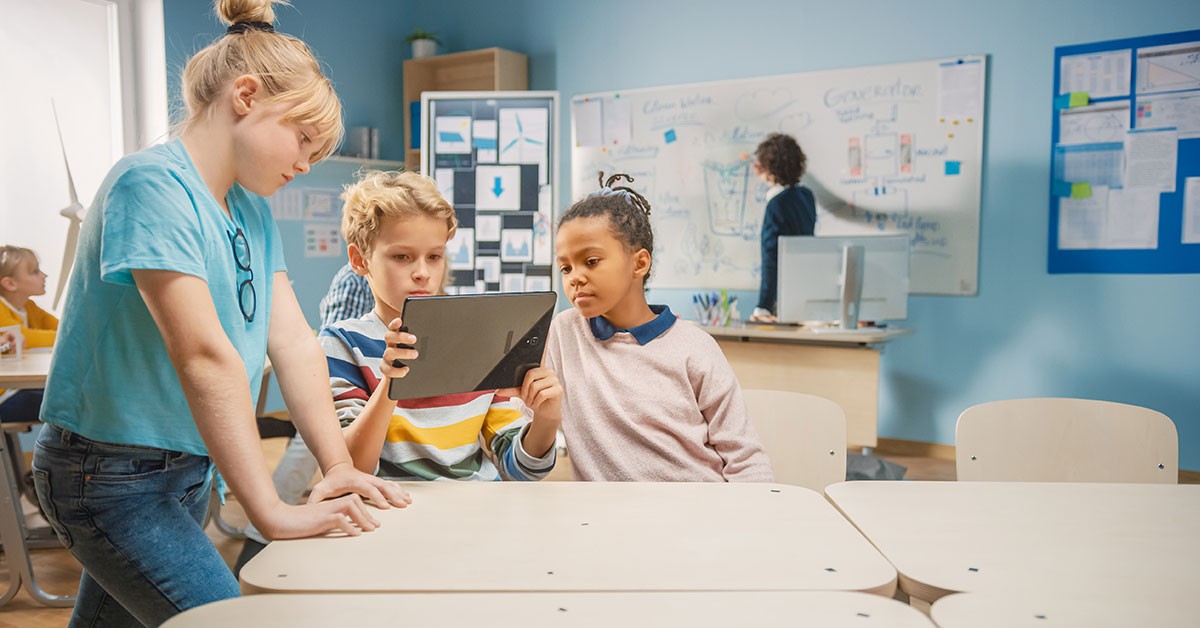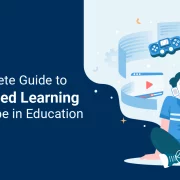
Advantages of Using Immersive Animations for Better Learning Outcomes in K-12 Education
Student engagement is vital in making learning impactful and engaging for K12 learners. This is simply because the majority of students may not find subjects such as science, history, or mathematics interesting, as grasping the concepts requires a lot of mental effort.
Using technologies such as immersive animations and simulations can be instrumental in making concepts interesting, thus improving student engagement and overall learning outcomes.
In this blog, we learn more about animations in K12 learning and how these immersive animations help improve learning outcomes.
Table of Contents:
- How Does Animation in K12 Learning Work, and What are the Advantages?
- Clear Understanding of Concepts
- Interactive Learning
- Enables Visualization
- Experiential Learning
- 5. Easy Accessibility and Affordability
- Fast and Easy Learning
- Supporting Different Learning Styles
- Improving Knowledge Retention and Recall
- Prepares Students for a Technology-Driven World
- Offers Instant Feedback and Personalized Learning
- To Wrap
How Does Animation in K12 Learning Work, and What are the Advantages?
Animation accounts for a massive part of the multimedia sector and is quite a popular medium with young students. Students want to explore, experience, and learn animation as it enables them to think outside the box and apply their imagination as well as rational thinking.
Animation in learning occurs when various pictures, images, or drawings are placed and played in a particular sequence to create an illusion of movement. The last few years have seen the use of animation in education gain rapid popularity due to its several advantages.
Apart from easing the process of learning complex concepts for students, immersive animation also brings learning to life and can be applied to nearly all K12 subjects. This allows educators to make learning fun, easily explain various concepts with the help of visual representations, and promote experiential learning.
Some of the key advantages of using animations in improving K12 learning outcomes are explained below:
1. Clear Understanding of Concepts
Research suggests that K12 learners understand different topics well when the information is offered as an immersive animation experience. Animation in K12 education uses visuals to present various abstract concepts and give the learners a clear picture of the lesson.
For instance, in biology, the use of animation makes a demonstration of body parts functioning much more fun and understandable. Similarly, in physics, the concept of force can be made more engaging and interesting through the use of animations, which demonstrate different examples of the topic with the help of various animated characters performing certain tasks.
Also Read: How to Develop and Deliver Interactive Lessons for Higher Education
2. Interactive Learning
Since different learners have different learning styles, animation, graphics, videos, and audio make learning much more interactive and participatory.
Additionally, short animated videos cover specific, relevant content to grab learners’ attention and ensure they don’t stray from the concept. As a result, learners develop their skills and knowledge conveniently through short visual representations.
Different interactive learning strategies allow learners to interact with the course content easily and comprehend the concepts faster. In this learning style, the retention rate is higher as the concepts are presented in the form of interactive and fun videos.
3. Enables Visualization
Using 2D and 3D animations in K12 learning allows students to visualize and better understand various complex questions more easily. As an audio-visual medium, animation keeps learners physically and mentally engaged.
For instance, questions related to algebra and word problems are difficult for K12 students to understand and comprehend.
However, demonstrating the same questions in an animated form helps students to visualize the problem and better understand the question. This makes it more meaningful for the students and leads to better learning outcomes.
4. Experiential Learning
Animation in K12 education helps present different abstract concepts through virtual reality, which brings more flexibility in learning intricate concepts. Various science experiments are dangerous for students to perform in real life, even though they form a crucial part of learning.
Bringing animation and VR for such concepts or experiments allows learners to perform them in a much safer environment with complete accuracy of results. This gives learners an invaluable experience they could only get when doing these experiments in real life.
Moreover, animation offers an alternative to learners through experiential learning as they cannot learn each concept practically while attending virtual classes.
5. Easy Accessibility and Affordability
Another advantage of animation in K12 education is its easy accessibility and affordability. Unlike the popular notion that animated videos are expensive to implement, they are quite affordable, thus allowing educators to use any form of animated videos without compromising on quality.
Another benefit of animation in education is its easy and ready availability. One animated video can be used by educators to teach many learners. Further, students can revisit a video to revise the concept anytime, anywhere, with just a smart device and a stable internet connection.
6. Fast and Easy Learning
Although time-consuming to produce, animations are much more time-saving material for students to learn. This is simply because visuals are processed much faster than text in the brain and help retain information for longer.
Additionally, immersive animations create a visually enticing learning experience for students, allowing for a real interactive experience without the cost of expensive machinery rentals or live shoots.
The best part is that once created, the number of learners who can use the material is unlimited, thus recovering the investment cost of creating animations.
7. Supporting Different Learning Styles
When you use animation in education to teach children, you give students opportunities to learn in their way. Pictures and videos use sight, sound, and touch to enhance the overall educational experience for learners.
Visual learners can interact with images and animations, while learners with a keen sense of hearing can listen to the narration. Animations let students experience coursework more interactively and increase memory retention capacity.
8. Improving Knowledge Retention and Recall
Animated videos and immersive animations are crucial for enhancing memory retention in K12 students.
When exposed to vibrant multimedia experiences, your students are more inclined to remember the information presented. Animations enhance memorization by stimulating various senses, strengthening neural pathways in the brain, and boosting recall.
For example, students could watch an animated video of an animal’s journey through its habitat instead of reading about ecosystems. This experience is more vivid and memorable than text alone, helping students recall specific details long after the lesson ends.
9. Prepares Students for a Technology-Driven World
Combining immersive animations into learning helps students become comfortable with digital interfaces and encourages a more digitally adept learning environment.
Eventually, your students learn to navigate digital resources, think critically about online content, and develop tech-savvy skills that will help them survive a technology-driven world. This exposure fosters subject knowledge and digital competencies that will benefit students throughout their lives.
10. Offers Instant Feedback and Personalized Learning
Immersive animations can be created to offer immediate feedback to learners as they engage with the material, enabling live correction and comprehension.
Prompt feedback reinforces right answers and aids students in recognizing their errors, facilitating their ability to learn from mistakes and enhance their skills. This also leads to a more individualized learning experience, as animations can adjust to a student’s pace and progress.
For instance, in mathematics K12 animated videos, if a learner makes a mistake while attempting to solve a problem, the animation can assist them in navigating the correct steps.
Using immersive animations in K12 education offers numerous advantages, including enhanced student participation, deeper comprehension, and accommodating various learning preferences.
By integrating animations, you can promote a more interactive and inclusive learning environment that helps students understand complicated concepts while keeping their enthusiasm for learning high.
Animations enable students to investigate subjects fresh and captivatingly, encouraging active engagement and knowledge retention. As an educator, utilizing these resources can upgrade your teaching methodology and improve all students’ educational outcomes.
Also Read: Boosting Student Employability with the Effective Use of Data
To Wrap
Using animation to achieve better learning outcomes in K12 education is a growing trend, and for good reason.
Immersive animations improve student engagement and creativity and enhance motivation and knowledge retention. By enabling interactive, experiential, and visually rich learning environments, educators can address diverse learning styles and make complex concepts easier to grasp.
Hurix Digital helps transform K12 education with innovative digital content solutions. Our expertise in creating immersive animations and interactive learning materials makes it easier for educators and institutions to deliver engaging and effective lessons.
Discover how our team can help you redefine learning outcomes and create impactful educational content.



